Welcome to The Human Factor, a podcast that puts the social in science.
I’m Cheryl Croucher. There’s a lot happening in the world of science and it’s not all about new technology. There’s a whole range of research activity in the humanities and social sciences. The Human Factor explores the impact scientific inquiry has on our daily lives and our decision making.
This is Episode 2 of The Human Factor.
My guest is John McDougall, previously head of the National Research Council of Canada and before that, the old Alberta Research Council. John’s new venture is called the Bio-Conversion Databank Foundation. And it just might hold the key to solving everything from health problems to resource sustainability, perhaps even our global climate crisis.
That interview coming up on The Human Factor.
Time: 31:52 Minutes
New Bio-Conversion Databank Reconfigures Mother Nature to Solve Global Problems

I first met John McDougall back in 2001. At the time, John was head of the Alberta Research Council, an organization with its roots dating back to the 1920’s. The ARC is now known as Alberta Innovates.
John was then invited to lead the National Research Council in Ottawa where he was president from 2010 until 2016.
But retirement seems to elude this engineer with a drive to help the world.
Over the last three years, John McDougall has been Involved in developing an exciting new platform that combines biology, genomics and machine learning.
It’s called the Bio-Conversion Databank Foundation (BioDF) and John is the CEO.
The Foundation is also launching a new company. It’s called SynBioBlox and it will demonstrate the practical application of bio-conversion. That’s using Mother Nature in new ways to solve the world’s many, many problems.
-
Cheryl Croucher (CC) interviews John McDougall (JM)
CC: WHAT IS THE MOTIVATION BEHIND SETTING UP THIS BIO-CONVERSION DATABANK AND THE FOUNDATION? WHERE DID THE IDEA COME FROM?
JM: Well, it’s very interesting. Way back when I was with the Alberta Research Council, we recognized that the greenhouse gas problem was real and that we had to do something about it. And I think our big intellectual breakthrough at the time was that, you know, we’re producing enormous quantities of greenhouse gases running all these factories, in a sense, and then throwing away what’s produced.
And that rather than doing that, perhaps we could do a little bit different. We could see greenhouse gases as low cost inputs that we could then use to produce products of various kinds.
So we actually went to work and we played around with algae for awhile, looking at growing algae, using greenhouse gases with the idea being that we would produce diesel from it.
But I would say really what it came down to at the end is that we were ahead of our time. We were doing some things, but the science and technology hadn’t really progressed far enough for it to be valuable.
So life goes on. And a couple of years ago I was approached, to say, well, maybe it’s time to revisit this whole agenda.
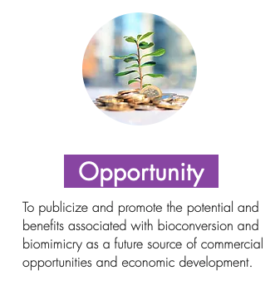
BioDF – Opportunity And we got about 15 people together, actually in our living room, for three days. And we tried to understand how we could come at the problem of greenhouse gases. And ultimately we figured that we should look to nature because nature seems to have the answers when it comes to biology.
You know, nature uses things from the air and nutrients from the ground and oceans, and maybe sunlight as energy and various other things. And it produces all the wonderful biological stuff that’s around the world.
And then within these larger organisms that we all see, there’s all the smaller organisms, the bacteria and viruses and various things, that are all kind of living together in various ways inside the life forms, using wastes and ultimately surviving that way. And the whole system is somehow in balance. There must be processes in the sense that we can find from nature to do that.
But the big problem with nature is that processes are slow. You know, if we think about growing crops, it takes months. If we think about animals, it’s years. If it’s forests, it’s centuries, you know, and so on.
And, also, when we look around, we see that nature uses a rather massive footprint. So you’ve got oceans and you’ve got forests and so on. But we said, well, if we can industrialize what Mother Nature has developed, maybe we can tackle this problem in a very different way. And synthetic biology has come along which gives us the wherewithal to do just that. So that was really where the whole thing came from.
CC: SO THE IDEA THEN IS, WELL, IT’S LIKE RECYCLING IN A WAY?
JM: It is. These days people are talking about the circular economy, but that really is just what biology has done forever, right. It uses the waste of one thing as inputs to another, and it just goes round and round and round.
The difference with synthetic biology is that now that we’ve been able to sequence genomes and understand the programming of the genomes and what they do and how they work, et cetera, et cetera, and even more recently with things like CRISPR, where we can actually play around with cells, we can eliminate pieces we don’t want. We can add bits from other organisms to make them work better. Or we can try to do design and build entire new ones. We’ve now opened up the door, if you like, for a whole new paradigm of approaches.
CC: SO ESSENTIALLY WHAT YOU’RE TRYING TO DO IS TAKE WHAT NATURE DOES AND THEN SPEED IT UP?
JM: We want to both speed it up and optimize it. So make it work better. So maybe it gets more focused and we make the organisms, you know, really hum away to do one task rather than a whole bunch of other things that aren’t of any real value. Or to maybe put things together in ways that no one’s ever thought of before that leads to a higher quality product at the end or whatever it may be. And that’s where we’re at. And what’s enabling that, because these genomes are so complex, is artificial intelligence and machine learning.
CC: SO GIVE ME AN EXAMPLE OF HOW YOU MIGHT USE THIS, WHAT YOU MIGHT TAKE FROM, SAY, THE GREENHOUSE GAS EMISSIONS AND WHAT KIND OF A PRODUCT CAN YOU END UP WITH? WHAT WOULD BE THE STEPS ALONG THE WAY? WE HAVE TO CREATE A FACTORY?
JM: Ultimately you have to create a factory. But let’s say you could take a gene, and make it produce an enzyme that would convert a greenhouse gas to fish food, for example. Then you could feed the fish in your fish farms, because what you may not know is that in the case of fish farms, for example, most of what they feed in fish farms is other fish. So, you know, this would change that parameter quite a bit.
Now that is now being done, right? The only difference is instead of the way I’ve described it, they’re not using greenhouse gases, they’re using waste, I believe it’s from a pulp mill. And then they’re producing this product.
But instead of using pulp waste, which is not a bad thing to do, but if we use greenhouse gases, we might be able to do it even better.
CC: SO IN A WAY, INSTEAD OF PUTTING, SAY, CARBON DIOXIDE AND STORING IT UNDERGROUND, YOU COULD USE IT TO CREATE NEW PRODUCTS?
JM: Well, exactly, because in a way, storing it underground isn’t really doing anything with it except, you know, it’s like hiding it in your closet. Right? I mean, that’s not a bad thing. We get stuff out of the way, but unfortunately, people keep getting after you to clean up the closet too. So, you know, it may solve the problem, but it’s purely a cost driven solution. There’s no revenue associated with it.
So if we do something where you can actually convert it into a valuable product and generate revenue, then you’ve really got something that makes sense. Right?
So if I was to take that little kind of fish food example, say, and we were able to come up with this nice little thing that does what we want it to do, then imagine that we could say, aha, we can take this bit of a cancer cell which we normally think of as a bad thing, and we can sort of add it in somehow to create explosive cell growth so it’s incredibly productive. Right?
So now we’ve taken something that’s bad and made it good. And so then we rapidly speed up that process of production. Now you’re really changing the game.
CC: WELL, I MEAN, WE HAVE GREENHOUSE GAS EMISSIONS COMING FROM INDUSTRIAL PLACES, FROM HOMES, FROM FACTORIES AND CIVIC BUILDINGS ALL OVER THE WORLD. HOW WOULD YOU EVEN KEEP TRACK OF ALL OF THAT? AND HOW WOULD YOU USE IT?
JM: Well, first of all, you don’t actually have to keep track of it all. When we think about doing something with greenhouse gases, it’s got to be really big. Right? It’s got to be really big.
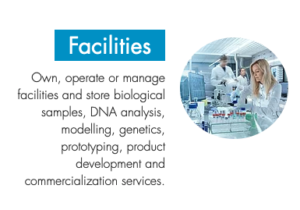
BioDF – Facilities So we put out, I think it’s more than 50 billion tons a year of greenhouse gases are being emitted. So if we do a billion tons a year, that’s all of, what, a couple of percent? Now that’s more than all of Canada, but it’s still only about two percent of what the world emits. So whatever we do has to be scalable. So it has to be deployable across a wide range of geographic footprints.
And again, if you’re going to do something with greenhouse gases because the volumes get to be so big, you don’t want to be moving these billions of tons around the world anyway. So you want to get it closer to market point of use anyhow.
So it’s just fine. You do want these things to kind of spread around the world. Right?
CC: SO THEN IN TERMS OF HAVING THESE BIO-CONVERSION FACTORIES OR PLANTS, THEY WOULD BE IN LOCAL AREAS. SAY YOU MIGHT HAVE THEM UP IN THE OIL SANDS AREA, OR YOU MIGHT THEM NEAR A PULP MILL. WHAT ABOUT AGRICULTURE?
JM: You’d almost certainly have them in places where there’s large emissions because it’s easier. There’s a stack. That’s pouring it out in large quantities – a great place to build your plant, right, because there’s your supply. And so lots of places are big emitters and so you can go there.
There are sectors that are big emitters that are more disparate, where the emissions are spread out and harder to get at. But, for example, in agriculture, since you raised it, agricultural waste from livestock production and dairy and all this kind of thing produces waste.
That waste is a challenge, not just because when a decomposes, it turns into greenhouse gases, but because it’s also can pollute in other ways if it gets into watercourses and so on. So, you know, you can apply organisms that will eat the stuff up and then change it into something like equivalent to methane.
So that’s what typically is called renewable natural gas, then you take that and feed it into the pipeline. And effectively what you’ve done is you then turned a waste into something usable again.
CC: SO THE NAME OF THE FOUNDATION IS BIO-CONVERSION DATABANK. HOW DOES THE DATABANK RUN?
JM: The idea of the databank is that it’s a place where you go to find information, to analyze information, to understand information and so on about genetics and these biological organisms. So it’s basically a toolbox that allows all that. Right?
And if you think about it, it’s really kind of an incredible artificial intelligence machine language engine that can analyze data, can build models and essentially just accelerate the biological development process because it will eliminate so much of the work that’s been done in labs up to now.
So using I.T. you can screen out many of the dead ends without actually having to work your way through laboriously months and years of work, you can do it in perhaps hours of running a model instead and say, oh, well, that’s not going to go, but what if we did this? It’s more likely.
So you screen out a lot of the potential that ends, which is I think a really important thing that makes it much more cost effective.
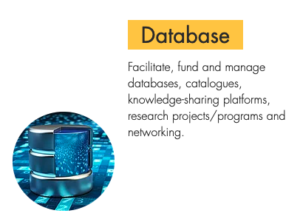
BioDF – Database So we decided to build this engine, if you like, to create ultimately a toolbox of biological organisms. So people will work with it. They’ll have areas they’re interested in and they can create these designer organisms and gradually what we’ll build up is like a Lego box full of bio-blocks. Right?
CC: OKAY. SO IT’S NOT AS THOUGH YOU’RE COLLECTING INFORMATION ON WHERE THE EMISSIONS ARE, WHERE THE WASTE IS, BUT ACTUALLY ON THE BIOLOGICAL TOOLS?
JM: Exactly. Right. And that information is widely available. It’s just really hard to use. So this tool basically simplifies that for the user.
It can go out and wander around the world over the internet and dig up public databases, you know, search through reports and journals and do all of this and bring all this information together where you can easily work with it and analyze it, and in very simple ways.
What we’ve done is we’ve tried to make it incredibly simple and visual for the users so that, for example, I could say, Cheryl, I want you to go and do such and such, and you could go in and you would be able to push the button and do what say a researcher and a grad student might take three or four months to do, and you do it in a couple of minutes and not require all that background knowledge in order to do it.

BioDF – A toolbox of biological organisms CC: SO HOW MUCH VOLUME IS THERE IN TERMS OF THE GREENHOUSE GAS EMISSIONS AND OTHER THINGS THAT YOU’D BE WORKING WITH? HOW DO YOU KNOW TO KEEP TRACK OF IT?
JM: Well, the greenhouse gases, the good thing is that governments all around the world measure that and they keep track of it.
We know where the big emitters are. So all of that information is pretty easy to get at. Certainly from our point of view, that’s not a hurdle whatsoever.
Where it gets really fascinating is in the biological data. So a simple bacteria has about a hundred million base pairs in its DNA. The human body has about 3 billion. So when you start looking at hundreds or thousands of these organisms, the data processing issue becomes just horrendous. Right? So the beauty today is, fortunately, technology is now at a space where you can actually do things a lot more quickly.
So we’re not as an entity having to keep all the data within the databank basically. When we need it, we can go and reach out to the places where it is maintained by various third parties. So it’s always what we bring in is always whatever is the most current available out there.
But when you think about, say, taking a run where you want to analyze a few hundred organisms, many people are familiar with these ancestry type things where they sell you, you know, you do your DNA swab and they sell you a package based on 25 markers or 37 markers or whatever. Right? But when you think of that relative to the 3 billion that there are in the human genome, it’s not very meaningful. So you’ve got to get into a lot more depth.
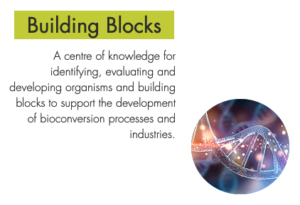
BioDF – Building Blocks And when you were starting to work with these data sets, you know, you turn your computer on and it would run for a few months. But today we’ve got new computer hardware, some really phenomenal chips and ways of doing things that has just changed that completely. So that’s where we get the enabling power.
But it’s non-trivial. and that’s again, you know, you’re not going to have everybody all around the world doing this. Somebody just has to take it on. And we think that by taking this on, it’ll be really good. And instead of millions of dollars and, you know, hundreds of person years to figure it out, you know, we can now do it in weeks or months and with just one or two or three people.
CC: THAT’S ASTOUNDING.
JM: It really is. It’s amazing. It’s just truly amazing.
CC: SO WHO OR WHAT ENTITIES OR AGENCIES ARE INVOLVED WITH YOU ON THIS?
JM: Well to start with, this was a bunch of people who had the public good in mind who put a lot of time and effort into it. So there’s about three years’ worth of hard work in this in terms of designing it and validating it and figuring out the way it should work and so on.
A couple of months ago, the Alberta Innovates group provided some funding so that we could hire some people and actually build it. So that’s underway now. We think this is really important that that part, the data part, is publicly available because information about the organisms and so on we think properly belongs in the public domain, just like DNA sequencing does, if I can put it that way.
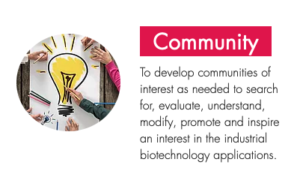
BioDF – Community So the data gathering and the data analytics and, you know, people interacting and the sort of building of communities through what we’re doing is all provided for free.
As we develop knowledge and it gradually works its way down the path. ultimately gets to the point where models are being produced, that we charge a token kind of a user fee for, and then ultimately as biological platforms emerge, then those can be licensed and people can carry them into the commercial marketplace.So at the moment Alberta Innovates is backing it. We’re working closely with Genome Canada because they are very enthusiastic about this. So they’re hoping that they can plug it into some of the funding envelopes that are emerging out of the last budget. And then, you know, we’ve got other organizations that we’re developing collaboration agreements with, where it can become a service that they would provide to some of their clients and so on.
CC: AND WHERE WILL YOU BE BASED? IN ALBERTA?
JM: We’re based here, actually. Our people at the moment are in Edmonton, Calgary and Vancouver but Edmonton is our base.
CC: YOU HAVE A COUPLE OF PROJECTS ON THE GO AND ONE OF THEM IS DEALING WITH A BACTERIA CALLED CLOSTRIDIA. WHAT’S THAT?
JM: Yes. Now the platform we’re building is very ubiquitous. It doesn’t care what you’re working on. It just cares that you’re interested and you want to use it to search out and look at different kinds of organisms. And the Alberta Innovates program that ultimately helped to fund the development of the platform happened to relate to health.
So we said, well, we better demonstrate it then against something that has a health relationship and clostridia certainly do. We’re aware of their disease-causing challenges and some of the issues that the health community has in dealing with various challenges associated with clostridia. So it’s a good one to just demonstrate to the health sector.
But we’re building in right off the start methanotrophs as well. Methane’s a greenhouse gas and methanotrophs are methane eaters, if you like. And we’re building in a database of what are called phages which are like viruses that do certain things it’s on. So all of these things can be illustrative to people of just how powerful and pervasive it is.
But ultimately, because it’s so ubiquitous, you know, we’ve got to make sure that we create focus, too, so that you can actually accomplish something as opposed to just a lot of nothing that really amounts to much.
So ultimately, it’s got to be targeted. And we’ve created a capability within the platform to run challenges so people can post problems that they need to have solved and encourage people to respond to them and hopefully, then, make sure that we’re targeting towards end uses that are really of value to people.
CC: WELL, I JUST WANT TO GO BACK TO THE CLOSTRIDIA BECAUSE UNLESS YOU REALLY KNOW WHAT IT IS, YOU DON’T KNOW WHAT IT CAUSES. BUT I UNDERSTAND THAT IT IS ONE OF THE CAUSES BEHIND, SAY, GASTROENTERITIS OR OTHER HEALTH PROBLEMS, EVEN SOMETHING THAT CAN KILL YOU. CAN YOU JUST DESCRIBE THAT A LITTLE BIT MORE ABOUT WHY PEOPLE SHOULD CARE ABOUT IT?
JM: Well, my problem is, of course, that I am not a biologist. I’m an engineer. But I can tell you a little bit.
Yes, it does cause diseases in the digestive tract. It can be quite serious or creates toxins in food sometimes when it goes bad. It’s not exactly a clostridia genome, we’ve just learned in the last few months. But c.difficile is a related organism that, you know, we hear about the challenges that they have with that in hospitals. You know, they’re a very interesting group of genomes. And I understand, but don’t ask me to explain it, that some of them even have a role in using greenhouse gases for various things.
CC: SO THEN CLOSTRIDIA, THERE’S SOMETHING THAT WOULD HELP CURE IT OR THERE’S SOMETHING THERE THAT WOULD HELP YOU ATTACK THE GREENHOUSE GAS EMISSIONS PROBLEM.
JM: Both. That’s why you have to decide what your agenda is.
So you could create something, for example, that might diagnose it. It would sense it and diagnose it using an organic approach. You might be able to find something that treats it if you get a problem or, as you correctly said, it may be that it has a role in a process we try to put together to use greenhouse gases to produce a particular outcome.
CC: NOW, YOU HAVE ANOTHER PROJECT. YOU ACTUALLY HAVE A COMPANY THAT YOU STARTED.
JM: Yes. Originally the beginning was actually to do this all as a company, and then we realized that the kind of data we were talking about really did belong in the public domain. It was pre-commercial and it should be available to as many people as possible, and that would really stimulate creativity and advancement in this area. So that’s why the Foundation came about.
But there’s still the need for enterprisers to actually use these platform organisms that evolve and carry them into the commercial space.
You know, going back to my Lego example or analogy, Lego gives you the box of tools, but you take it home and decide what to build. You may decide you want to build something that they’ve designed for you in advance or you may want to do something that’s entirely creative and specific to you. Right?
So SynBioBlox, as we call it, is going to be the commercial engine for the greenhouse gas related things that come out of the Foundation.
But we expect over time that the Foundation will actually be involved with certainly the greenhouse gases, organisms there, probably with environmental issues, probably with sustainable agriculture, certainly with health, you know, etcetera. Right? Water treatment. Waste treatment. There are so many pathways.
So what we hope is it will stimulate the formation of these varying communities of interests who will then say, aha! For us we’d like to use the tool for one of those.
And that’s just great. That’s the dream ultimately – is that we have multiple communities all kind of focused on Alberta as a place to get this kind of work done. And presumably, then stimulating activities that, at least to some degree, relate strongly to Alberta and in a sense help us transform into a bioeconomy.CC: WELL, I GUESS ONE OF THE RECENT EXAMPLES WOULD BE WHERE A COMPANY HAS DEVELOPED A WAY OF INJECTING CARBON DIOXIDE, A RESULT OF EMISSIONS, INTO CEMENT TO MAKE CEMENT BETTER. SO THOSE ARE THE KINDS OF PRODUCTS THAT YOU’RE LOOKING AT, THE KINDS OF PROCESSES?
JM: They could, in fact, be those sorts of things. In that instance, I think when the cement cracks and water gets in, it triggers certain things to happen. So effectively the cement or the concrete knits itself back together again, as I understand it. So those are great. Right? And if there’s a biological element that’s associated with those kinds of things, then it’s there.
Maybe we would look at the replacement for polyethylene so we could actually create biodegradable plastics that that still have the performance characteristics that we want.
Or maybe we could create a replacement for diesel fuel that’s every bit as energy intense, but it doesn’t have the sort of some of the negative consequences. But again, are produced using greenhouse gases as the inputs. You know, there’s just loads of things you can get at.
CC: WELL, YOU VERY KINDLY SENT ME SOME SLIDES OF A PRESENTATION THAT YOU GAVE. AND I THINK MY VERY FAVOURITE SLIDE WAS THE ONE THAT SAYS YOU CAN MAKE TONS OF MONEY FROM IT. WHERE’S THE ECONOMIC PAYOFF?
JM: Well, the economic payoff ultimately is when you produce biological systems of production that are competitive with alternative processes.
So many people are looking to move away from, shall we say, classic, physical and chemical processes into biological processes where in a sense the biological organisms are the doing the chemical and physical processing.
But what’s happened is that many of the things that people are looking at are being looked at with, say, sugar as the input. So sugar is expensive, first of all, and it doesn’t really do anything for us in terms of greenhouse gases. So if we take sugar, which in the case of a number of products that we’ve been looking at others trying to do, that cost of sugar is 80% of the production costs.
So if we take that out and instead we use greenhouse gases, which are free because they’re just being thrown away, effectively we’ve eliminated 80% of the cost. Right? Now the biological process is probably going to be a little bit more capital intensive. Not necessarily. It shouldn’t be any more expensive to operate, but it would be slightly more capital intensive. But the beauty of it is you’ve reduced your input costs by 80%. Then the likelihood is you can make some real money out of it.
CC: SO, JOHN, HOW ARE YOU GOING TO GET THE WORD OUT ABOUT THIS? IT SOUNDS REALLY EXCITING!
JM: First, we wanted to get our platform in place. We didn’t want to be talking too much about it when we couldn’t show anything to people. Right? But within another few weeks we’ll actually be able to start signing up users, so at that point we can start going public.
We’re very connected to a lot of the community around the country because this is a very powerful tool that everybody that we’ve spoken to really loves.
So we’re starting to run some workshops. We’re bringing in sort of early people, I won’t call them early adopters but they’d be fairly close to that, to try to get their ideas and of how we can make it even more useful for them. And then we’ll be starting to kind of roll out publicly more into the summertime.
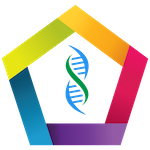
BioDF – Bio-Conversion Databank Foundation But that’s the big job. The big job is awareness. But I think that so far when we go out and we talk to people, the users end up convincing us how good it is rather than us having to convince them. So it’s a good sign.
CC: WELL, I WISH YOU ALL THE BEST AND I EXPECT I’M GOING TO BE TALKING TO YOU A LOT IN THE FUTURE OVER THE VARIOUS PROJECTS THAT COME OUT OF THIS.
JM: Well, I hope so. So I’m looking forward to that, actually, and appreciate your time, Cheryl. It’s great to talk to you again and thank you.
CC: THANK YOU VERY MUCH.
JM: Thank you.
John R. McDougall is a co-founder and CEO of the Bio-Conversion Databank Foundation.
Learn more at www.bio-conversion.org.
